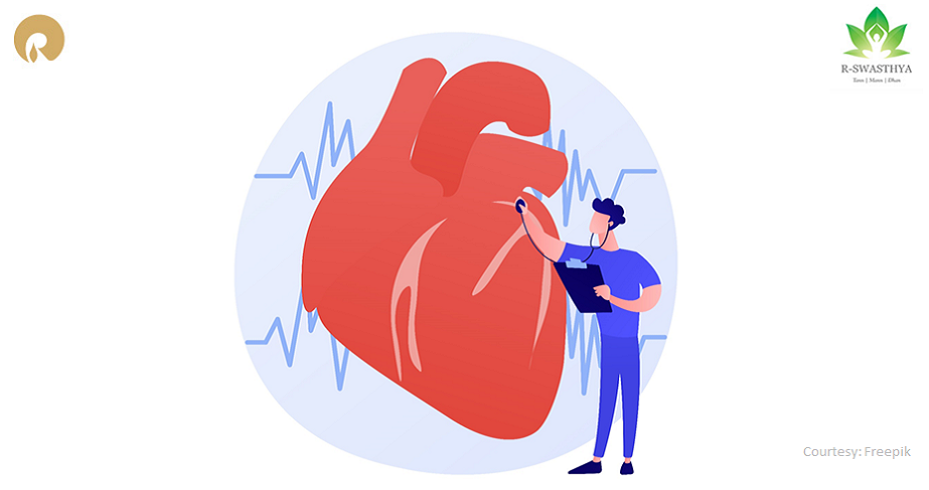No other organ in the body has received as much attention over the centuries as the heart.
It is considered the seat of all human emotions and has been most closely associated with love. It is also associated with bravery: think of Richard the Lionheart, or the oft-used expression ‘braveheart’.
The heart is also linked with kindness, as in, ‘He has a kind heart’, or the opposite of it, ‘He is so heartless’. It’s also considered a bag in which we put our feelings. We often talk about a person’s heart being filled with joy or sorrow and many other emotions.
No wonder then that ailments of the heart attract so much more attention than any other part of our body.
At the centre of all this attention is a small organ, no larger than the size of your fist. Its sole function is to act as a pumping station, which receives and distributes blood.
It would not be wrong to say that, in terms of function, it’s far less complicated than most organs in our body, such as our brain, kidneys and liver. Yet, in terms of importance, it occupies centre space.
How often have you heard someone say, “She fell in love and gave him her brain,” or someone being called a ‘bravekidney’, or someone’s liver being filled with joy?
Home is where the heart is
They say that home is where the heart is. To easily understand the functioning of the heart, think of it as a house.
This house has two rooms on the ground floor and two more above it. The lower two rooms, or chambers, are called ventricles, and the upper two chambers are called atria (the singular is ‘atrium’).
The upper and lower chambers are separated by a door on each side. These doors are called valves, and open only in one direction.
The left and right side of the heart are divided by a wall in between, thus forming a left and right atrium, and a left and right ventricle.
The heart lies in the chest cavity, slightly towards the left, and is protected by your breastbone, known as the sternum. It narrows towards the bottom and is angled to the left.
Your heart works as a muscular pump
The simplest way to describe the working of the heart is as a muscular pump. In order to fulfil its function, the heart needs to contract (to pump blood) and relax (to allow blood to fill) in a rhythmical manner. The heart muscle, which is vital for its functioning, is known as the myocardium.
The contraction of the heart is known as systole (pronounced sys-toe-lee), and relaxation is called diastole (pronounced die-as-toe-lee). Each time the heart contracts, it’s counted as a heartbeat, and the number of times the heart beats in a minute is known as the heart rate.
People often ask what their normal pulse or heart rate should be, and in school we were taught, 72 beats per minute. Usually, most people have a heart rate somewhere between 65-85 beats per minute.
Often, athletes and very fit sportspersons have heart rates that are well below 60, and it has been said that some super-athletes have heart rates below 40 beats/minute.
When you exercise, your heart rate is supposed to increase, so do not measure your heart rate during or immediately after exercise and confuse it with your resting heart rate.
So, at what level of resting heart rate should you be concerned? Actually, there is no pre-defined level below or above which one must consult a doctor, but I would suggest getting it checked if it is consistently below 55 beats/minute (and you are not a super-athlete) or above 100 beats/minute at rest. To check your pulse rate, use a pulse oximeter.
The heart too needs blood
If we assume that your heart beats about 75 times per minute and you live for 75 years, then in your lifetime your heart will have relaxed and contracted 3,000,000,000 times; that’s three billion heart beats.
Now that’s a lot of work even for the strongest braveheart!
To provide energy for this mind-boggling task, the heart muscle needs a constant supply of oxygen-filled blood.
This is supplied through blood vessels known as coronary arteries. These arteries arise from the aorta soon after its exit from the left ventricle. They are called the right and left main coronary artery. The left further divides into the left anterior descending artery (LAD) and the left circumflex artery. They run on the outer surface of the heart. An easy way to visualize it is to look at your clenched fist. You will notice some blood vessels running on the outer surface, which are very similar to the way your coronary arteries travel on the surface of your heart.
Just as your house has pipes supplying it with water, which is essential for the survival of the household, these arteries supply blood to the heart for its survival. (The only difference being that the coronary arteries always receive adequate supply, unlike the water pipes in your house which are dependent on the local municipality!)

Take-home messages
- The heart is a muscular pump, which supplies blood to the whole body.
- Think of the heart as a house, with four chambers; the upper two are called atria, and the lower two are called ventricles.
- Resting heart rate (pulse) is usually between 65-85 beats per minute.
- For the heart to function, it needs its own blood supply, which comes from three coronary arteries and their branches: left anterior descending artery, left circumflex artery and right coronary artery.
This article is part of a series of articles on prevention, treatment, and reversal of heart disease by Dr Aashish Contractor.

